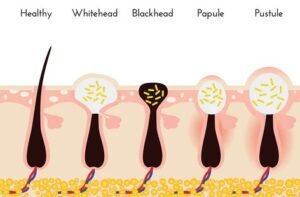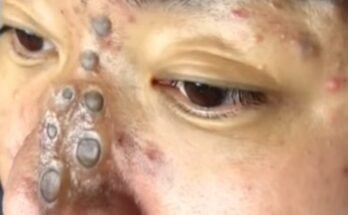Understanding Blackhead 51: A Deep Dive
Blackhead 51 is a fascinating topic that has intrigued many, particularly those interested in skincare and beauty. As part of a series that delves into various blackhead types, Blackhead 51 stands out for its unique characteristics and the methods available for its removal. In this blog post, we will explore the nature of Blackhead 51, its causes, and effective treatments to manage this common skin concern.
What is Blackhead 51?
Blackhead 51 refers to a specific type of blackhead that typically appears on the skin due to clogged hair follicles. These blemishes are characterized by their dark appearance, which is caused by the oxidation of melanin when it comes into contact with air. Unlike other blackheads, Blackhead 51 may have distinguishing features that set it apart, such as its size and the skin type it commonly affects.
Common Causes of Blackhead 51
Understanding the causes of Blackhead 51 is crucial for prevention and treatment. Here are some common factors:
- Excess Oil Production: Oily skin types are more prone to blackheads due to the overproduction of sebum.
- Pore Blockage: Dead skin cells and environmental pollutants can lead to clogged pores, resulting in blackheads.
- Hormonal Changes: Fluctuations in hormones, particularly during puberty or menstrual cycles, can increase oil production.
- Poor Skincare Routine: Inconsistent cleansing or using comedogenic products can exacerbate the problem.
Treatment Options for Blackhead 51
Fortunately, there are several effective methods to treat Blackhead 51. Here are some popular options:
1. Exfoliation
Exfoliating regularly can help remove dead skin cells and prevent clogged pores. Look for chemical exfoliants containing salicylic acid, which is known to penetrate oil-laden pores.
2. Cleansing
A good cleansing routine is essential. Use a gentle cleanser to remove excess oil and impurities from the skin. For those with oily skin, consider using a foaming or gel-based cleanser.
3. Professional Treatments
If at-home treatments don’t yield results, professional options like chemical peels or microdermabrasion may help. These treatments can deeply cleanse the skin and remove blackheads effectively.
4. Non-Comedogenic Products
Using skincare and makeup products labeled as non-comedogenic can help minimize the risk of blackhead formation. These products are formulated to avoid clogging pores.
Preventing Blackhead 51
Prevention is key when it comes to managing Blackhead 51. Here are some tips to keep your skin clear:
- Maintain a regular skincare routine, including cleansing and exfoliating.
- Stay hydrated and maintain a balanced diet.
- Avoid touching your face to reduce the transfer of bacteria and oils.
Conclusion
Blackhead 51 is a common yet manageable skin concern. By understanding its causes and implementing effective treatment and prevention strategies, you can keep your skin looking healthy and clear. For further reading on related topics, check out Blackhead 50 and Blackhead 49 for more insights into blackhead types and treatments.


